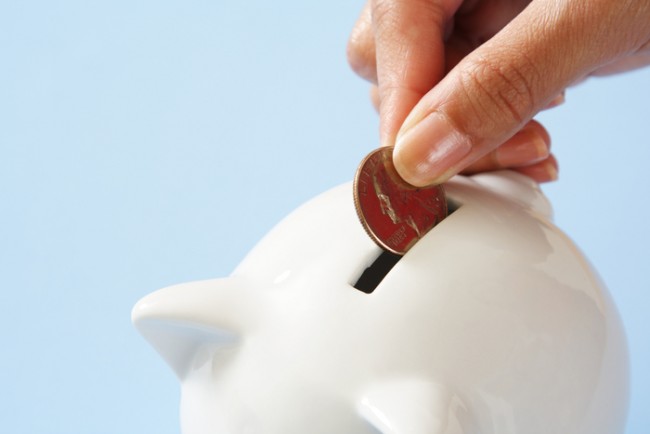Fatten Up The Piggy Bank Before Attacking Your Debt
To ensure you get the best information, you will find ZERO ads, affiliate links, and sponsored posts on this site. Click here to learn more about my mission.
When you finally came to the realization that your debt was out of control, I bet you were pretty angry. That’s understandable.
After that anger subsided, the eagerness to start eliminating your debt came next.
You probably said, “I’m never letting debt intrude on my financial life again”. That’s a powerful statement and something that I want to focus on for this article.

Breaking the Cycle of Debt
Step 4 in the 9 Steps to Financial Freedom is “Save a Little Cash”.
This step is strategically placed before attacking your debt because you must remove your reliance on debt before committing full force to it’s elimination.
What do I mean? Well, let’s say that you are in the process of eliminating your debt and run in to a little car trouble. If you need to pay $500 for a crucial repair and have no cash in the bank, what are you going to do?
I can guarantee with almost 100% certainty that you will rely on debt. It’s what you’ve done for so long. In fact, it’s really your only option.
You see, that’s the cycle of debt. You pay down some debt and then an emergency pops up. Since you don’t have any cash to pay for it, you accumulate more debt.
Well, it’s time to break that cycle.
Before eliminating debt, you MUST have a small cash buffer (i.e. Emergency Fund).
How much? Well, I recommend a months worth of your essential expenses.
What expenses are classified as essential you ask? Those would be expenses such as your housing, utilities, basic food expenses, transportation to and from work, needed medical expenses, insurance premiums and minimum debt payments.
Get the total of your essential expenses by taking a quick peek at your budget. Once you have the number, make it one of your financial goals and get to work!
How to Handle Debt During This Process
Your debt payments are really easy during this step. Just pay the minimum.
By only paying the minimum on your debts, you will be able to maximize your savings.
When you are looking at your budget, you want there to be as much left over at the end of the month as possible. These are the funds that you are going to save for the target amount that you determined earlier.
If all goes well, you’re not going to be paying the minimum on your debts for too long.
Once you have your one month buffer, that extra cash you have each month is going to be used for your debt.
Where to Keep Your Small Emergency Fund
As you begin saving some cash, it’s going to be pretty tempting to spend it. You’re human, right? 🙂
You might want to keep it far enough out of reach that it’s hard to access but close enough that if an emergency came up, you could get the money quickly. Here are some strategies that have worked for my clients:
Two Local Banks
The first strategy is to open up a separate savings account at another bank or credit union in your community.
This will help keep a healthy distance between your savings and primary checking account.
Just be sure that this new savings account doesn’t come with an ATM card or other means of easy access!
Online Banks
Another strategy is to use an online savings account to house your emergency funds.
Personally, my wife and I bank at Ally Bank. You could simply open an account there (or any other online savings account) and link the new account with your checking account.
It takes a few days for the money to transfer between accounts. Therefore, if you need your cash for an emergency, be careful not to accumulate debt waiting for those funds to arrive in your checking account.
Checking Account Buffer
For some of you, just keeping the emergency savings in your checking account is an option.
Another way to think about this is that you have all of your essential expenses covered before the month even starts. No more worrying about bouncing checks or getting huge overdraft fees!
This strategy requires a TON of willpower. An easy way to trick yourself into thinking the money isn’t there is to make the new “$0 balance” in your checking account your required one-month savings. In other words, if your one-month savings goal is $1,500, once you hit that threshold you can say to yourself that there is no spendable money in your checking.
Now get out there and take care of your money, so it can take care of you later.
Your financial coach,


